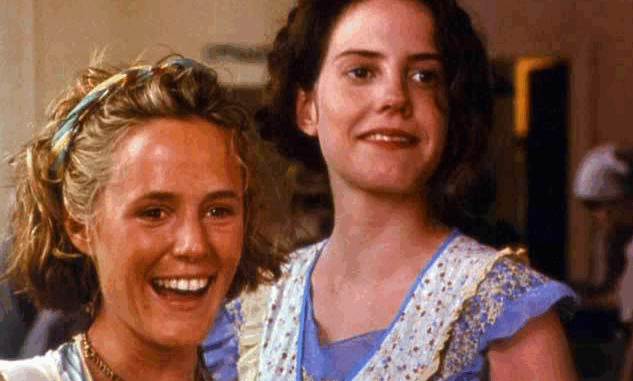
The calm before the storm — a pivotal, quiet departure
In Fried Green Tomatoes, the scene in which Ruth leaves Whistle Stop to marry Frank Bennett is one of the most emotionally charged and subtly devastating moments in the film. There is no explosive argument, no dramatic tears, no confrontation. Instead, we witness a quiet storm brewing beneath the surface — and it’s in that stillness where the heartbreak lies.
Idgie Threadgoode watches helplessly as Ruth packs her belongings. Their eyes meet briefly, and the silence between them says everything. Ruth, carrying the weight of societal expectations and family pressure, feels she has no choice. Idgie, with her untamed spirit, knows exactly what’s being lost — not just her closest friend, but the woman she quietly loves.
A painful sacrifice masked as duty
The heartbreak in this scene isn’t just about two people parting ways — it’s about a deeper emotional bond being torn apart by societal roles. Ruth, the “proper Southern lady,” feels obligated to fulfill what’s expected of her: marry a man, build a family, and live a respectable life.
But the cost is enormous. In leaving Whistle Stop, Ruth is also leaving the only place she has ever felt truly seen — and the only person who has ever loved her unconditionally.
Her decision isn’t framed as betrayal. The film treats it with compassion — as a tragedy shaped by the invisible chains of gender roles, family obligation, and the inability of 1930s society to accept a same-sex relationship.
Idgie’s grief in disguise

Idgie doesn’t cry. She doesn’t beg Ruth to stay. That’s not who she is. But the pain is undeniable. The woman who fearlessly faces down a swarm of bees and runs a café in a male-dominated world can’t bring herself to say goodbye with vulnerability. Instead, she turns stoic — a mask to cover the grief she doesn’t know how to express.
We see her wrestle with her emotions in the days that follow. She becomes more rebellious, more withdrawn. It’s grief in motion — not for a lost romance, but for a life that might have been.
The letter that was never sent
Though the goodbye is wordless, the depth of Idgie’s sorrow later surfaces in the unsent letter she writes to Ruth. Found after Ruth’s death, the letter reveals that Idgie had been aching to tell her how much she missed her — but never did.
This retrospective look at the moment of separation adds layers of sadness and longing. It confirms what the audience already sensed: that the scene of Ruth leaving wasn’t just a farewell — it was a rupture in their unspoken love story.
Cinematic brilliance in understatement
What makes this scene exceptional is how understated it is. No swelling orchestras. No declarations. Just two women on a porch, standing in the unbearable space between love and duty. The filmmakers let the actors’ body language, lingering looks, and physical distance do the talking.
It’s storytelling at its finest — trusting the audience to feel what isn’t said.
H2: A scene that echoes through the entire film
Ruth’s departure casts a long emotional shadow. When she later returns, abused and in need, Idgie takes her back without question. Their reunion is powerful, but it’s made even more poignant because of this earlier moment of loss.
Their goodbye scene teaches us something universal: that sometimes, love is not enough to override the weight of societal expectations — but it never truly disappears. It lingers, it scars, and it waits for a second chance.
Final thoughts: The goodbye that defined a lifetime
This quiet moment of separation between Ruth and Idgie may seem simple on the surface, but it’s a masterclass in emotional storytelling. It reminds us that some of the most important decisions in life are not shouted — they’re whispered, endured, or left unsaid.
In that porch scene, Fried Green Tomatoes gives us more than a farewell — it gives us a portrait of love trapped in its time, forced to remain in the shadows, but burning no less brightly for it.
